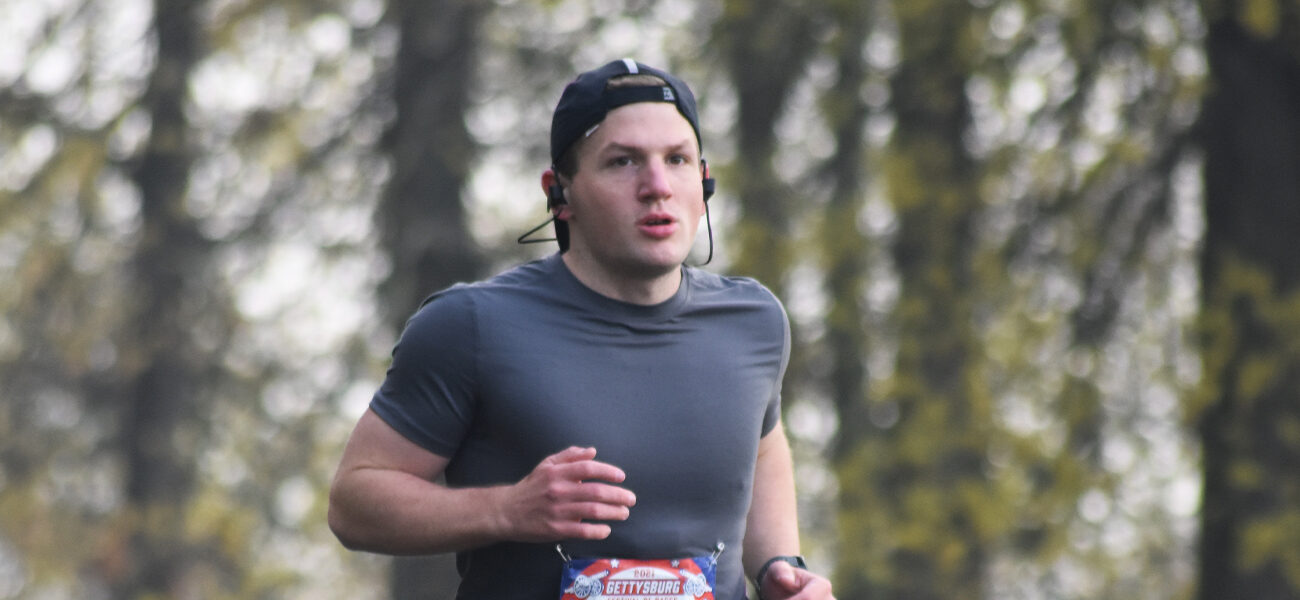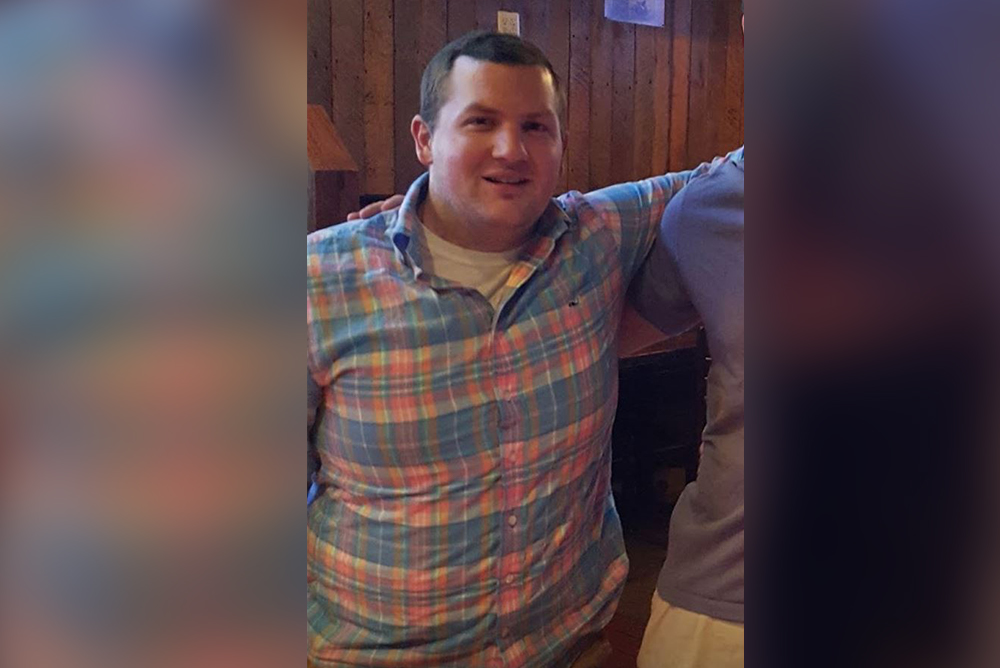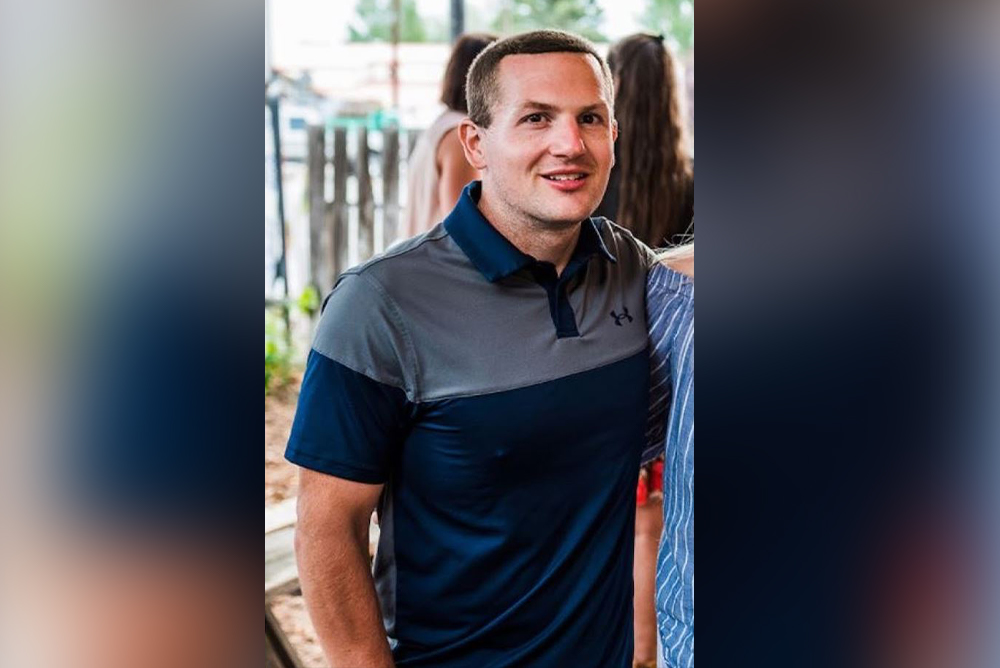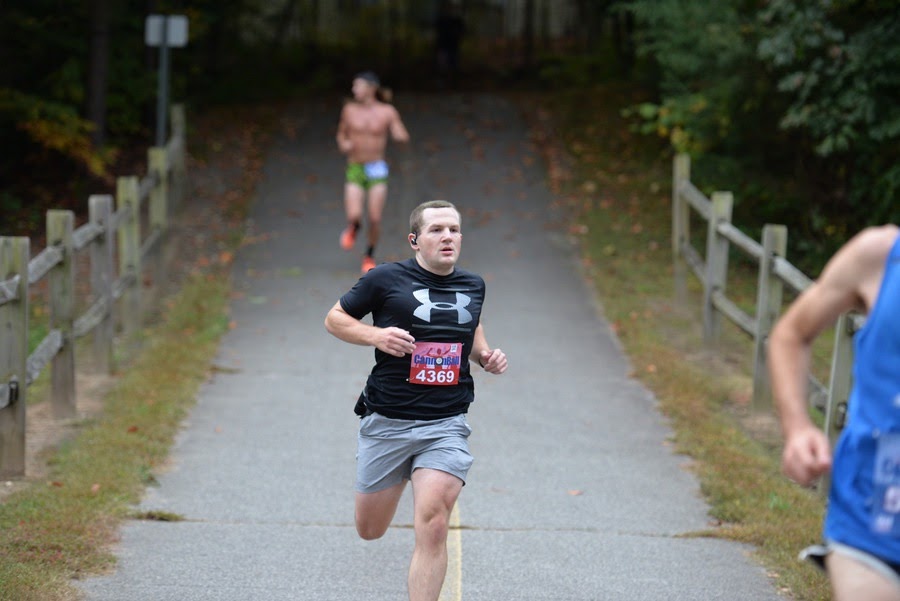From Obese to Sub 3 Hour Marathoner: Matt Mueller’s Inspiring Running Story

Matt Mueller spent almost his whole adult life battling his weight.
“Before I started, I was 50 lbs heavier, completely out of shape, and unmotivated to anything active, but continually upset about my weight.”
“Recently, I ran the New York City Marathon, and I broke 3 hours. It was my 3rd marathon and the first in NYC,” says Matt.
After losing 50 lbs with running, Matt Mueller is now a changed man who inspires the weight loss and running community with his transformation every day and helps others achieve their dreams.
Today our journalist sits down with Matt to find out more about the routine that helped him lose weight and transform his whole life.
We saw your story on Reddit, and you were receiving so many comments. It was amazing, wasn’t it?
It feels really cool. I knew that what I had done was pretty crazy. A sub-3 marathon goal is huge for many people, and many people may try it, and not that many can get there. I’m glad that other people like the story, but it felt amazing to go from being obese to where I am today. I knew a sub-3 marathon was a very lofty goal but something, I thought, was still doable.
Could you explain a little about why you started your weight loss journey and how soon did you start to notice the results?
5 years ago, I was 50 lbs heavier, completely out of shape, and unmotivated to do anything active, but continuously upset about my weight. I didn’t have a routine, nor did I have a plan. When I actually started trying to lose weight, I really wasn’t losing at all. I was doing CrossFit and thought, like many people, that if I just exercise a lot, I don’t have to change anything else.
I was getting stronger, my aerobic engine was improving, but my weight stayed the same no matter what I did in the gym. That, at first, was devastating – what am I doing wrong? And then I realized what many people who try to lose weight have also learned – no matter what, no matter how hard you work, you can’t out-train a poor diet. So I made up a plan.
In the summer of 2019, I finally made a real and conscious decision to get into shape. I got serious about my diet – I decided to cut out take-out and drinking and learned how to cook at 25. And within a month, my weight was falling off, but I still couldn’t have been considered fit. I was fitter and had lost weight, but I was still technically obese.

Why did you choose running in particular?
Due to Covid, all gyms shut down, and running was the only thing I could do. I actually didn’t even have any other options. The only exercise left was running. But during this time, I fell in love with the process of running.
Could you tell us more about your marathon experience?
During my Boston marathon training, I told myself to run as fast as possible. I’m thankful for my girlfriend, who is a physical therapist. She told me that I would hurt myself if I continued running like this. It’s not safe to run on that volume and intensity all the time.
This was the time when I hung up on the idea of low heart rate training. I bought myself a heart rate strap, learned about the heart zones, and fell in love with endurance training. I learned about the goal of improving the heart’s efficiency at a particular range.
When you’re running too hard, your heart is not getting the same benefit as you would have below 80% of your max heart rate each. When your heart rate gets that high, your heart is almost spasming. When the heart rate is lower, you’re actually stressing it to the point where you’re improving stroke volume and your aerobic capacity. And when you get deep into long runs at a lower rate, you actually start producing more mitochondria and denser capillary beds.
The vast majority of people run their “easy” runs too fast. After about a month of building a solid base, I remember the first time my pace was 20 to 30 seconds per mile faster. I was in shock – how am I this fast already? It was immediate validation that what I was doing was right.
You’ve lost 50 pounds by running, that’s amazing! What was the response you’ve received from others?
Many of my friends were college athletes and active, so I was the overweight one in our group. My friends used to run 10k or half marathons often. When I occasionally joined them, I was always behind. But one day, I think it was around June of 2020, my other 6 friends and I organized a half marathon through the city of Baltimore. I won by 20 minutes! They were stunned.
The first time I ran a half marathon with one of them, they beat me by 50 minutes. So it was wild to see their reaction. They were genuinely happy for me, even though I not only caught up to them but overtook them in terms of fitness.
It was definitely a pretty cool experience going from an overweight and out-of-shape person to the fit one in my friend’s group.

Do you think anyone who wants and has long-term goals can achieve this without prior running experience?
Anyone in reasonable shape could wake up 4 months from today and comfortably complete a marathon. They would need to follow a plan and stick to it to set up a calendar and ensure they’re not missing any workout. They should follow their plan and not try to go out and run every run really fast. If you can’t have a conversation with your running partner while running, your easy run is not easy at all.
It really depends on how the person will follow the training plan. If they’re going to be like me and just think that they can do whatever and run every run really fast, they’re going to have a bad time. If they come into this running a marathon with an understanding that this is a process that will not change overnight, then anyone can do almost anything they want. In fact, they can run a marathon within 16 weeks.
What were the motivational hacks you used for yourself? You mentioned setting up a calendar; you also had some sort of pressure from your fit friends, but was there anything else that helped you boost it up?
Yeah, there were a couple of things. Only 1% of obese people actually achieve a normal BMI. Less than 1% of people finish a full marathon. Of those people who complete the marathon, only a small percentage of people can run a marathon in 3 hours. Being one of those people was my biggest motivation.
I was planning to achieve these goals in the Delaware marathon in December. But in mid-July, my brother got married, and the day after my brother’s wedding, my dad told us that he got stage 3 lymphoma. Because of that, I was given an opportunity to run the New York City marathon with leukemia and lymphoma society. I wanted to finish this New York marathon and raise money for leukemia and lymphoma society. If my dad can beat cancer, I can definitely finish a marathon – that was my motivation.
What would you say to the people who are hesitant to start or are stuck somehow?
Remember, nothing is gonna happen overnight. The quickest way to achieve your goal is just to slow down – don’t try to kill yourself. You will get to your goal faster if you take a measured approach and don’t overdo it. You may think more is always better, but it’s not. Faster is not always better either.
Also, if you really want to achieve your goal badly enough, you have to find the time. Motivation is a huge part of the factor. Make it a priority and find the time to make your goal happen.
Do you think having a personalized running plan or expert supervision is important and could help achieve running goals faster and safer?
If it weren’t for people a lot smarter than me who have already reached their running goals, I would probably just be beating my head against the wall, doing the same thing that I was doing, and making little progress. So yes, I think professional training and support are very important.

Any plans or dreams for the future?
To never stop running.
If Matt’s story inspires you, our Editorial team wholeheartedly recommends checking out the Joggo running app.
First, you take a quiz and fill in your preferences. Then the app provides a personalized running plan created by top running specialists and personal trainers. The plan is tailored to your running goals and even health conditions.
With the app, everything is taken care of: from the customized running plan, warm-up and cool-down exercises to educational articles on injury prevention, nutrition, breathing techniques, and more. All you need to do is take the first step.
Seeing Matt’s transformation, we can’t help but recommend the Joggo app and running too.
You can take the quiz below!
Comments (0)